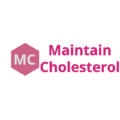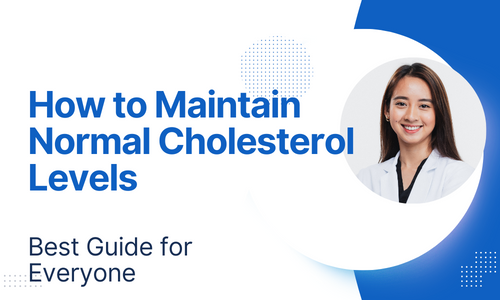Table of Contents
Introduction
Maintaining normal cholesterol levels ensures that you are healthy and your risk of heart diseases is low. When levels are normal your LDL levels are also normal. If LDL levels are excess only then it may deposit in the arteries, leading to atherosclerosis and subsequently to heart attack, coronary artery disease or stroke.
Getting You Cholesterol Levels Tested
Keeping your cholesterol levels in check may seem daunting, but if you already have normal levels, there are a few simple things you can do. First, get your cholesterol levels checked so you know where you stand. Once you know your numbers, you can make adjustments to your diet and lifestyle to keep your cholesterol levels healthy.
Image
Plan a yearly cholesterol checkup:
You must get blood testing done every year to check your cholesterol levels if you don’t have a history of heart disease.
in the ordinary range. Keep in mind that regular tests are crucial as you age since, as you get older, your exercise levels tend to decline and your cholesterol levels tend to rise as a result of lifestyle changes.[1]
The three figures that represent your high-density lipoprotein (HDL), low-density lipoprotein (LDL), and triglycerides represent your cholesterol level.
Your doctor will advise that you have your cholesterol evaluated more frequently if you have a history of heart disease.
You must obtain a blood sample for laboratory analysis in order to screen your cholesterol.
Check your LDL levels:
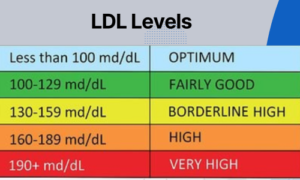
Check your low-density lipoprotein (LDL) level, whether they are normal or high. According to lipid hypothesis, if LDL referred to as “bad” or “lousy” cholesterol are high, then can slowly block the arteries. Over time you may show the symptoms of heart disease.
Check the LDL level from your cholesterol screening and see where it falls on this range: [2]
- Less than 100 md/dL: optimum
- 100 to 129 md/dL: fairly good
- 130 to 159 md/dL: borderline high
- 160 to 189 md/dL: high
- 190+ md/dL: very high
Check your high-density lipoprotein (HDL) levels.

HDL is known as the good cholesterol. If your LDL levels are elevated, generally HDL levels are lower < 40mg/dl. Increasing HDL levels is another way of cholesterol treatment. Your target should be to increase it >50 mg/dl
Determine where your HDL level falls on this range: [3]
60+ mg/dL: optimum
Less than 40 mg/dL in men: major risk
Less than 50 mg/dL in women: major risk
Check your triglycerides.
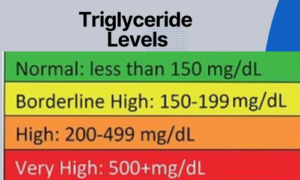
One of the most prevalent types of fat in the body, triglycerides are found in your blood and are made up of both lipid lipids and sugar. You run a higher risk of developing metabolic syndrome, diabetes, and heart disease if you have too many triglycerides in your blood.[4]
If your triglyceride level is 150 mg/dL or higher, talk with your doctor about lowering it.
———————————————————————————————————————————
Consult with your doctor about taking cholesterol-lowering medication.
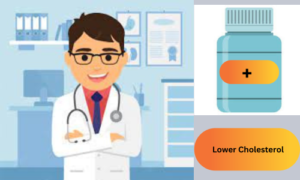
If your doctor believes that your cholesterol levels are high and you have or are at risk for heart disease, the doctor may prescribe medication to quickly lower your cholesterol.
Follow your doctor’s treatment plan and get your levels checked again to determine that the medication is working. [5]
Check what type of medication your doctor has prescribed for you – cholesterol lowering, HDL increasing or for lowering triglycerides.
————————————————————————————————————————————–
Method 2 of 5
Check for emerging risk factors of heart disease

There are three other risk factors present in the blood stream which are linked to heart disease risk. They are called as emerging risk factors.
These three factors are:
Lipoprotein(a) levels;
C-Reactive protein &
Homocysteine levels.
Out of these three, lipoprotein(a) is a type of lipid, similar to LDL cholesterol but more dangerous than bad cholesterol.
—————————————————————————————————————————–
Check for lipoprotein(a) levels.
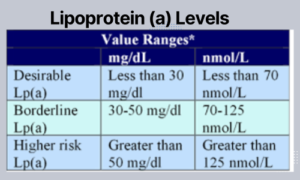
Theoretically Lp(a) levels should be 0 to 5. This may be the levels when you were born and young. In most of the people very small levels of lipoprotein(a) are present from birth.
High levels of lp(a) is a risk factor for heart disease. It is more dangerous than bad cholesterol. It is considered as an independent risk factor for heart disease.
Upto 30 mg/dl is considered normal;
Above 30mg/dl is considered high
The higher the values more the risk
——————————————————————————————————————————-
Check CRP and Homocysteine Levels
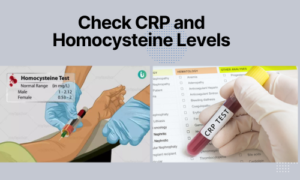
Check for CRP and Homocysteine levels
CRP is a marker for inflammation. If there is no inflammation its value will be zero. The higher the value higher the inflammation [https://pubmed.ncbi.nlm.nih.gov/16682512/]
C-reactive protein (CRP), a nonspecific inflammatory marker, is widely used to monitor treatment of cardiovascular diseases (high serum CRP levels indicate poor outcome of heart disease). A healthy lifestyle decreases serum CRP levels, while obesity, physical inactivity, and smoking increase them. https://pubmed.ncbi.nlm.nih.gov/16682512/
Similarly, Homocysteine is marker for metabolic syndrome and atherosclerosis [ https://pubmed.ncbi.nlm.nih.gov/27600468/] [https://medlineplus.gov/lab-tests/homocysteine-test/]
Talk with your doctor about lowering lipoprotein(a), CRP & Homocysteine levels
If your doctor believes that your one or all the three emerging risk factors are high and you have or are at risk for heart disease, the doctor may prescribe medication to quickly lower your lipoprotein(a), CRP or homocysteine. Follow your doctor’s treatment plan and get your levels checked again to determine that the medication is working.[5 ?]
Test for calcium score
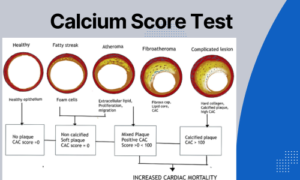
Calcium score is a test which shows the amount of plaque that is deposited in the arteries. The more the calcium score, the higher the risk of heart disease. If the calcium score is almost zero, then it means that your cholesterol levels are normal. It also means that your arteries are clean.
I have written about calcium score test in my article here.
If you wish to maintain normal cholesterol levels, then your arteries should be clean. If you know how to maintain clean arteries either through food, lifestyle changes or through supplementation then you can prevent heart disease.
If some plaque deposit is already present and you are able to unclog it and improve your arterial health, I am sure you can reverse heart disease.
Your motto should be to keep arteries clean so that you can maintain normal cholesterol levels as well as prevent and reverse heart disease.
————————————————————————————————————————————-
Eating Healthy Diet
Tip 1: Carbohydrates
Consume whole grains as source of carbohydrates as it contains fiber and the micronutrients in it.
Do not eat food from which micronutrients are removed like sugar, sugary drinks, white flour (Maida), polished rice, products made from white flour like cakes, pastries, cookies etc.
Micronutrients are needed to metabolize the carbohydrates and produce energy.
Tip 2: fats
Consume fats derived from vegetable and animal origin. They could be saturated as well unsaturated fats. The fats should be rich in oil soluble vitamins like vitamin D and E.
Do not forget to eat fats containing essential fatty acids [https://www.ncbi.nlm.nih.gov/pmc/articles/PMC4190204/] like omega-6 and omega-3. They are essential for endogenous synthesis of important hormones.
Tip 3: proteins
Eat proteins like milk and milk products, proteins form animal origin like chicken, meat and fish. The proteins you eat should provide all the 8 essential amino acids.
Animal protein provides all the essential amino acids. If you are dependent on protein from vegetarian source then eating milk products like paneer will provide all the essential amino acids. Most of the Legumes are deficient in a few amino acids like lysine. Therefore, eat a variety of legumes and pulses. Soybean is a rich source of lysine.
Tip 4
Include a variety of fruits and vegetables in your diet. Eat 3 to 5 servings of fruits and vegetables every day. Fresh produce is high in fiber and micronutrients which help in metabolism of fats, carbs and proteins.
Apples, grapes, strawberries, and citrus fruits are all good options to add to your diet.
A serving is typically about half of a cup of fruits or vegetables.[8]
Tip 5
Ask your doctor about taking a supplement to maintain your cholesterol.
Research shows that antioxidant supplements like vitamin C, E and D are effective at maintaining normal blood cholesterol.
Ask your doctor about taking a supplement to improve your collagen synthesis as it will help to keep your arteries clean.
If you keep your arteries clean, then LDL will not deposit in arteries.
If you’re concerned you’re not getting enough soluble fiber, ask your doctor about adding a fiber supplement
Improving Your Lifestyle
A healthy lifestyle is one that promotes physical, mental, and emotional well-being. It includes a variety of factors, such as:
Quit smoking
Smoking destroys several antioxidant vitamins present in the body, thus creating deficiency of antioxidant vitamins in the body.
These vitamins have several functions to perform in the body. Hence cellular function gets affected.
You can start with quit smoking aids in order to change your behavior from smoker to non smoker.
Quit drinking alcohol
Consume alcohol in moderation. Excess consumption of alcohol depletes your body several B complex vitamins and minerals and may cause liver problems.
You can click here “best way to quit drinking alcohol” to lean how to improve your habits on drinking.
Getting regular physical activity:
Adults should aim for at least 150 minutes of moderate-intensity aerobic activity or 75 minutes of vigorous-intensity aerobic activity each week. Children and adolescents should get at least 60 minutes of physical activity every day.
There are several exercise and fitness equipment’s that you can use for exercising at home or in gym. You can also perform yoga to keep yourself fit. if you are new to yoga, learn more about yoga in the article 5 best yoga poses for beginners.
References
What Is a Lipoprotein (a) Test? https://www.webmd.com/heart-disease/what-is-lipoprotein-test
Lipoprotein (a) : https://www.cdc.gov/genomics/disease/lipoprotein_a.htm
Prevention and Treatment of Atherosclerosis. Improving State-of-the-Art Management and Search for Novel Targets: https://link.springer.com/book/10.1007/978-3-030-86076-9
C-Reactive Protein. Structure Affects Function: https://www.ahajournals.org/doi/full/10.1161/01.CIR.0000127085.32999.64
Coronary Artery Calcium Score – A Reliable Indicator of Coronary Artery Disease? https://www.cureus.com/articles/78867-coronary-artery-calcium-score—a-reliable-indicator-of-coronary-artery-disease#!/
Cholesterol Numbers and What They Mean https://my.clevelandclinic.org/health/articles/11920-cholesterol-numbers-what-do-they-mean
